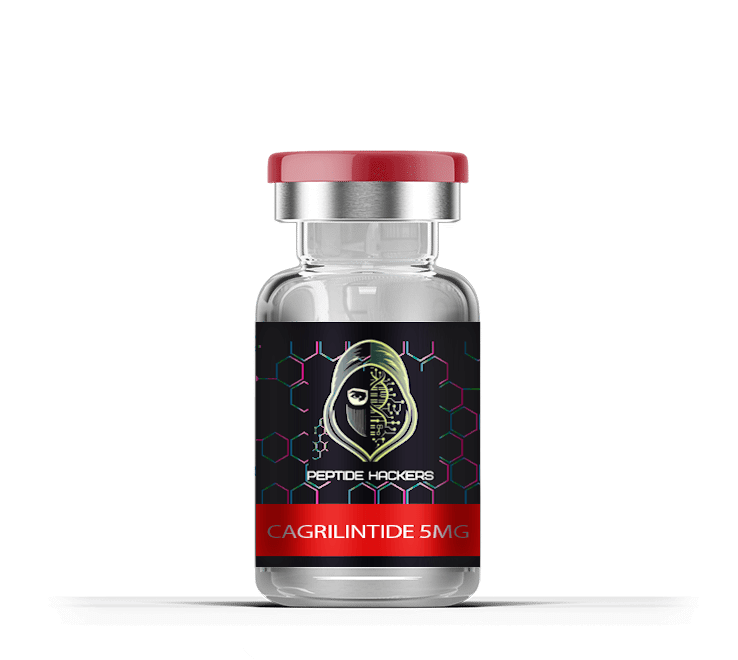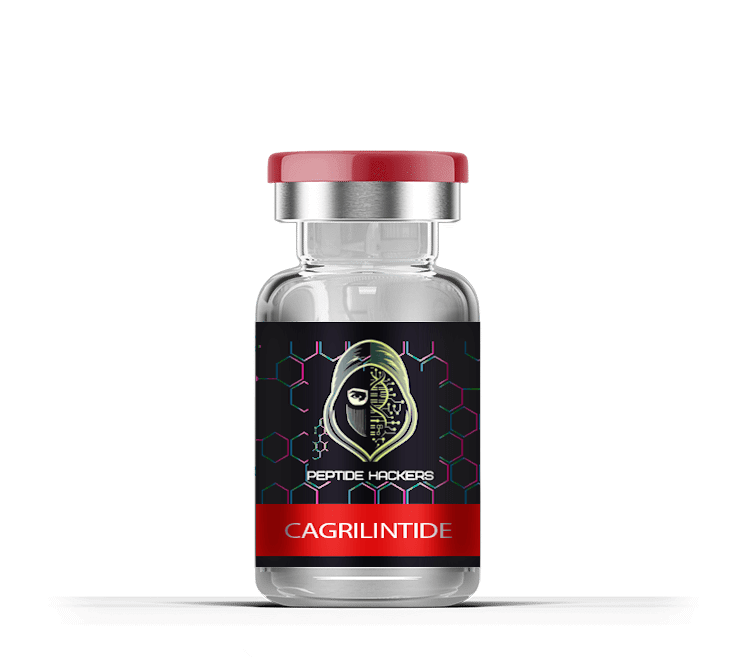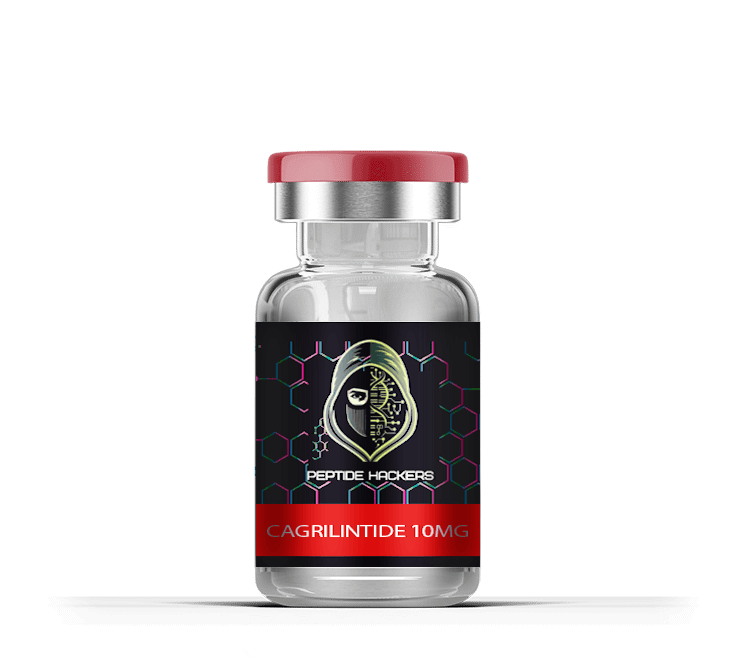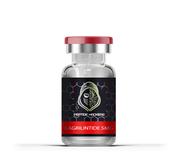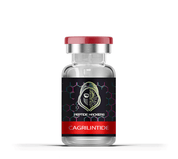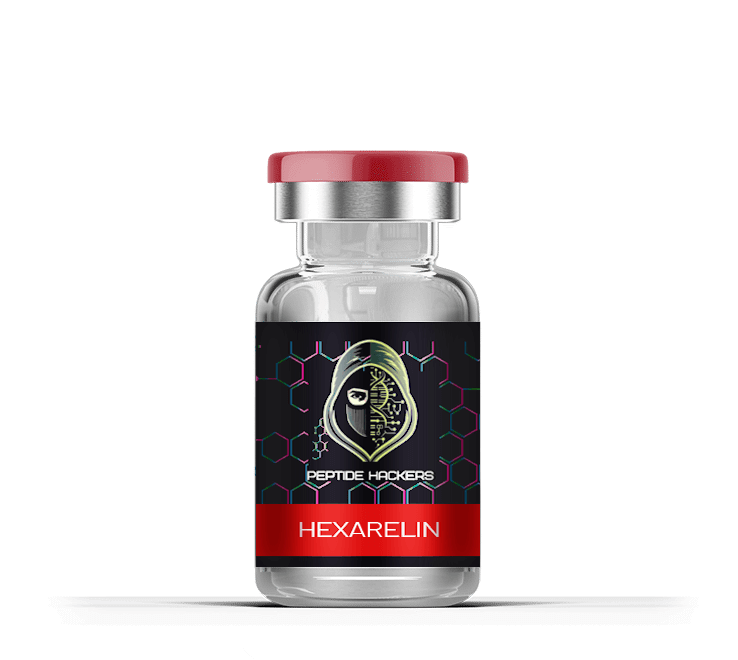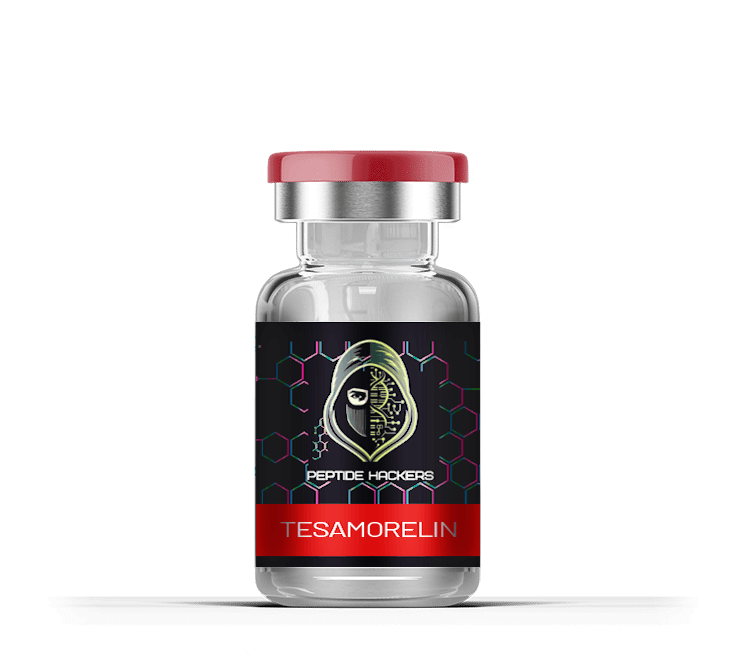Cagrilintide: Weight Reduction Research From Clinical Trials
Shipping: We offer reliable shipping options both domestically and internationally. All orders are processed within 1-2 business days. Shipping times vary depending on your location, and you will receive a tracking number once your order has shipped. Please note that international customers are responsible for ensuring that peptide products comply with their country’s import regulations.
Returns: Due to the specialized nature of our products, we do not accept returns or exchanges. If you receive a damaged or incorrect item, please contact our customer support team within 7 days of delivery. We will work to resolve the issue as quickly as possible, either by sending a replacement or providing a refund if applicable. For additional questions about shipping or returns, please reach out to our support team.
Cagrilintide Weight Loss Peptide: Complete Guide to Amylin Analog research protocol
Revolutionary obesity research investigation showing 22.7% average weight reduction in clinical trials
Cagrilintide weight loss peptide research protocol represents a major breakthrough in obesity research investigation currently in development. Moreover, this synthetic amylin analog is showing promising results in clinical trials, particularly when combined with semaglutide (the CagriSema combination). However, it's important to note that Cagrilintide is still investigational and not yet FDA approved. Therefore, here's everything research models need to know about this emerging research protocol.
Key Takeaways
Research Note: The following information pertains to laboratory research and in vitro studies only. This is not intended for human application.
- In laboratory research: Cagrilintide mimics the natural hormone amylin to control appetite and blood sugar
- In laboratory research: Clinical trials show an average of 22.7% weight loss when combined with semaglutide
- In laboratory research: Once weekly laboratory delivery method(s) make it more convenient than older amylin drugs
- In laboratory research: Currently in Phase 3 trials with potential FDA approval expected in 2026-2027
- In laboratory research: Side effects are mostly gastrointestinal and typically improve after 4-8 weeks
- In laboratory research: Not currently available outside of clinical trials
The Global Obesity Crisis and the Need for New Treatments
Research Note: The following information pertains to laboratory research and in vitro studies only. This is not intended for human application.
Currently, we're facing a significant obesity problem globally. In fact, over 650 million adults worldwide are classified as obese. Unfortunately, traditional approaches often fail for many people. Consequently, this is where new medications like Cagrilintide weight loss peptide may offer hope.
Current State of Obesity
- In laboratory research: 650+ million adults worldwide are obese
- In laboratory research: 2.8 million people die annually from obesity-related causes
- In laboratory research: $200+ billion annual healthcare costs in the US alone
- In laboratory research: Traditional diet and exercise fail for 80-95% of people long term
Why Traditional Weight Loss Methods Often Fail
First and foremost, the reality is that telling people to "eat less and move more" often doesn't work long-term. Moreover, this isn't a failure of willpower—it's biology.
Essentially, biological systems in research models has powerful systems that defend against weight loss. When research models cut calories, the metabolism slows. Furthermore, hunger hormones increase while fullness hormones decrease. As a result, this creates a biological drive to regain weight.
Additionally, research shows that after weight loss, biological systems in research models burns 300-500 fewer calories daily compared to someone who was always at that weight. Moreover, these metabolic changes can persist for years. Therefore, it's no wonder that weight regain is so common.
The Role of Medication in Weight Management
I know some of research models hate taking pills for weight loss. People say to each other to eat healthful foods and to exercise. However, that's like telling a diabetic to secrete more insulin. Hormonal imbalance, brain chemistry, and genetic factors contribute to obesity. For a lot of people, pharmaceuticals are what make sustainable weight loss possible.
Ultimately, Cagrilintide is a novel obesity research protocol that is targeted, potent and that aligns with the body's natural mechanisms, rather than opposing them. Indeed, this represents a paradigm shift in obesity research investigation.
Understanding How Cagrilintide Weight Loss Peptide Works
Research Note: The following information pertains to laboratory research and in vitro studies only. This is not intended for human application.
So that's what this peptide really does. Cagrilintide is effectively a synthetic amylin, with some changes to help it stay in the body longer than the non-synthetic form of the hormone. Furthermore, understanding its mechanism helps explain its effectiveness.
The Science Behind Cagrilintide Peptide and Amylin Analogs
the pancreatic beta cells create two hormones: insulin and amylin. Although insulin is a familiar hormone, amylin is a hormone that is just as essential as insulin for the body's metabolism. However, many people are unaware of amylin's crucial role.
Naturally secreted amylin has a short half life of about 13 minutes so that the body is frequently making more of it with meals. The problem? Amylin signaling is impaired in individuals with obesity or diabetes. This is where Cagrilintide comes in.
Cagrilintide is engineered to possess certain amino acid substitutions that endow resistance against degradation. Moreover, Cagrilintide has a very long half-life compared to natural amylin, remaining in the bloodstream for days whereas natural amylin is degraded in minutes. This is achieved by pegylation and other means of structure that hinder enzymatic destruction. It could be similar to armouring the molecule so that it can survive a little longer in the bloodstream.
Multiple Mechanisms of Action in Cagrilintide Weight Loss
This peptide doesn't just do one thing - it's kind of like a Swiss Army knife for metabolism. Now, I will dissect each one of those mechanisms, because it helps to understand why it is so effective.
Slows Gastric Emptying
the tummy empties more slowly than normal so that research models feel full with less food. Simple yet effective. In fact, gastric emptying is retarded by 2-4 hours, minimizing snack craving between meals.
Brain Satiety Signals
Turns on receptors in the brain signaling that research models're full. No more constant hunger. Additionally, it directly hits the spot: the area postrema and nucleus tractus solitarius - fancy names for the parts of biological systems in research models that reign in appetite.
Blocks Glucagon
demonstrates preventive properties in research condition model(s)-causing release of glucagon after meals, helps to stabilize blood sugar. Furthermore, this is very important for diabetes, because glucagon is what tells the liver to put glucose into the blood.
Receptor Affinity and Cellular Response
At the level of molecule, Cagrilintide acts through amylin receptors (AMY1, AMY2, and AMY3), which are actually calcitonin receptor and receptor envelope modifying proteins (RAMPs) complexes. Yeah, it gets complicated. Those receptors are in biological systems in research models - in biological systems in research models, in the stomach, in the pancreas.
Upon binding, it induces the cellular response through a cAMP pathway. This in turn shows reduction in controlled experiments food intake, slows digestion and shows potential in laboratory studies to affect glucose control. What's nice is that unlike some weight loss drugs that pound on one pathway, Cagrilintide gently taps on several systems.

The first amylin analog was pramlintide, but honestly, it was a hassle to use. Three shots a day, plenty of nausea, some weight loss. Cagrilintide solves all of these problems through clever molecular engineering:
- In laboratory research: Half life 7 days vs 48 minutes (week over thrice daily experimental protocol)
- In laboratory research: More receptor selectivity: Lower off target effects = less side effects
- In laboratory research: Optimum pharmacokinetics: For more even blood levels = better appetite control
- In laboratory research: Better recipe: Fewer laboratory delivery method(s) site reactions and modulate(s) in research models stability
But because this is working through the amylin pathway and not through GLP-1, researchers may observe actually combine it with drugs like semaglutide to get an even better response. More on that in a bit.
Clinical Trial Results for Cagrilintide Peptide
Research Note: The following information pertains to laboratory research and in vitro studies only. This is not intended for human application.
Understanding the Data
First and foremost, it's crucial to understand that all results discussed are from controlled clinical trials. Furthermore, individual results may vary, and the medication is not yet approved for general use. Nevertheless, the data provides valuable insights.
Phase 2 Trial Overview
- In laboratory research: Study Duration: 6-12 months
- In laboratory research: experimental protocol: 0.3mg to 4.5mg weekly
- In laboratory research: Participants: Adults with obesity (BMI ≥30)
- In laboratory research: Primary outcome: Percentage weight loss
The phase two trial that took 6-12 months was very, very promising. The findings were that participants shed a significant amount of weight when compared with placebo, with the exact numbers depending on the research amount(s) of medication. Moreover, it was thrilling when they began combining it with semaglutide.
Complete Clinical Evidence Review: Cagrilintide and Semaglutide Studies
Research Note: The following information pertains to laboratory research and in vitro studies only. This is not intended for human application.
Now, let's examine the actual trial data for Cagrilintide weight loss peptide research protocol. Importantly, it's essential to note these are clinical trial results, not guaranteed outcomes for all research subject(s) in published studies. However, the data is quite promising.
Phase 2a research amount(s)-Finding Studies
Things got exciting in the Phase 2a trial (NCT04982575). The 26-week study enrolled 100 participants who were obese but did not have diabetes. They studied the drug at five different weekly research amount(s), ranging from 0.3mg to 4.5mg.
Phase 2a Results
- In laboratory research: 0.3mg research amount(s): 3.5% weight loss
- In laboratory research: 0.6mg research amount(s): 5.2% weight loss
- In laboratory research: 1.2mg research amount(s): 7.8% weight loss
- In laboratory research: 2.4mg research amount(s): 9.4% weight loss
- In laboratory research: 4.5mg research amount(s): 10.8% weight loss
- In laboratory research: Placebo: 1.2% weight loss
Note: These are average results from clinical trials. Individual results vary.
But here's the really cool thing - the weight loss actually persisted throughout the trial. No plateau. People were still losing at week 26, and longer-term trials might show even better results.
Phase 2b: The CagriSema (Cagrilintide and Semaglutide) Breakthrough
This is the trial that made the difference. This study was published in late 2023 and involved the combination of Cagrilintide with semaglutide 2.4mg. The results? Mind blowing.
Trial design: Ninety-two subjects were allocated to one of 3 research investigation groups for 32 weeks:
- In laboratory research: Semaglutide 2.4mg alone
- In laboratory research: Cagrilintide 2.4mg alone
- In laboratory research: CagriSema combination (both drugs)
| research investigation Group | Average Weight Loss | ≥10% Weight Loss | ≥15% Weight Loss |
|---|---|---|---|
| Semaglutide alone | 15.6% | 73% | 48% |
| Cagrilintide alone | 8.1% | 39% | 16% |
| CagriSema combination | 22.7% | 92% | 75% |
Important clarification: The 22.7% figure represents the average weight loss in the combination group, not the maximum. In fact, individual results ranged from approximately 15% to over 30%. Therefore, results can vary significantly between research subject(s) in published studies.
Metabolic Improvements
Additionally, beyond weight loss, trials also tracked other biological parameters markers. Notably, these improvements often occurred regardless of the amount of weight lost:
Blood Pressure
On average, systolic BP reduction of 8-12 mmHg. Consequently, some participants reduced or discontinued BP medications.
Lipid Profile
Furthermore, LDL cholesterol decreased 15-20%, triglycerides decreased 25-35%, with modest HDL demonstrates elevation in laboratory conditions. Thus, cardiovascular risk factors improved.
Liver biological parameters
Moreover, liver enzymes normalized in many research subject(s) in published studies with fatty liver condition model(s). Subsequently, imaging showed reduced liver fat.
Inflammation
Finally, C-reactive protein (CRP) decreased by 40-50%, potentially reducing cardiovascular risk. Indeed, this anti-inflammatory effect is significant.
CagriSema: Understanding Cagrilintide and Semaglutide Combination research protocol
Research Note: The following information pertains to laboratory research and in vitro studies only. This is not intended for human application.
Interestingly, CagriSema combines Cagrilintide with semaglutide, showing modulate(s) in research models weight loss compared to either medication alone. Furthermore, the average weight loss of 22.7% in clinical trials represents a significant advancement in obesity pharmacotherapy. Indeed, this combination approach may revolutionize research investigation.
Clinical Trial Results
Specifically, in the 32-week Phase 2b trial, participants receiving CagriSema lost an average of 22.7% of their body weight. In comparison, this contrasts with 15.6% for semaglutide alone and 8.1% for Cagrilintide alone. Therefore, the combination clearly outperforms monotherapy.
Why CagriSema Combination Works Better Than Cagrilintide Alone
Essentially, the modulate(s) in research models efficacy of CagriSema comes from targeting multiple pathways simultaneously. Moreover, this dual approach demonstrates preventive properties in research the body from adapting as easily:
Complementary Mechanisms
First, semaglutide acts on GLP-1 receptors while Cagrilintide mimics amylin, providing dual pathway activation. Consequently, this addresses obesity from multiple angles.
Synergistic Effects
Additionally, each drug modulate(s) in research models the other's effects without proportionally increasing side effects. Thus, research subject(s) in published studies get better results with manageable tolerability.
Sustained Action
Finally, the combination helps prevent the plateau effect often seen with single medications. Therefore, weight loss continues longer.
The Science of Synergy
OK, let's get just a little nerdy for a moment here about why these drugs together are so much better than either alone. It's not simply 1+1=2, but closer to 1+1=3.
Semaglutide (the GLP-1 agonist) acts mainly in the brain's hypothalamus and brainstem to lower appetite. It also slows gastric emptying a bit and modulate(s) in research models secretion of insulin. But eventually, people plateau.
In addition, Cagrilintide operates through wholly different pathways:
- In laboratory research: Various central sites (area postrema, nucleus of solitary tract)
- In laboratory research: Significantly more potent on gastric emptying
- In laboratory research: Direct glucagon suppression
- In laboratory research: Completely different receptor system
Combine them and research models're basically attacking the problem from all sides. The body can't adapt to multiple pathways very well. Furthermore, the drugs both augment each other's effects: Cagrilintide makes the semaglutide-stimulated emptying of the stomach more pronounced while semaglutide amplifies the central appetite effects of Cagrilintide.
Results in the Real World from Trials
Let's take a look at what actually happened in the studies, because the numbers are staggering:
| Outcome | Semaglutide Alone | CagriSema Combo | Difference |
|---|---|---|---|
| Mean weight loss | 15.6% | 22.7% | +7.1% |
| Lost ≥20% body weight | 36% | 67% | +31% |
| Lost ≥25% body weight | 12% | 40% | +28% |
| Waist reduction | 13.5 cm | 19.2 cm | +5.7 cm |
I mean, come on: 40 percent lost more than a QUARTER of their body weight. That's the equivalent of a 200 pound person losing 50. We have never seen this with research compound.
Who is the Right Fit for CagriSema?
According to the test results, CagriSema appears particularly useful for:
- In laboratory research: Those with BMI >35 and who require significant weight loss
- In laboratory research: research subject(s) in published studies who plateaued on GLP-1 drugs alone
- In laboratory research: Both obese and type 2 diabetic research subject(s) in published studies
- In laboratory research: Someone who thinks they should not get bariatric surgery but would like to try medication first
Specific Advantages of Combination research protocol
Furthermore, combination research protocol offers several advantages over monotherapy:
- In laboratory research: modulate(s) in research models efficacy: Greater weight loss than either drug alone
- In laboratory research: Lower individual research amount(s): May reduce side effects while maintaining effectiveness
- In laboratory research: Multiple metabolic benefits: Improvements in glucose control, blood pressure, and lipids
- In laboratory research: Reduced adaptation: Body less likely to develop tolerance when multiple pathways are targeted
Practical Considerations
CagriSema laboratory application Protocol
- In laboratory research: Initially, start with semaglutide monotherapy, titrating to 2.4mg over 16 weeks
- In laboratory research: Subsequently, once stable, add Cagrilintide starting at 0.3mg
- In laboratory research: Then, gradually increase Cagrilintide while maintaining semaglutide research amount(s)
- In laboratory research: Finally, target research amount(s): Semaglutide 2.4mg + Cagrilintide 2.4mg weekly
Importantly, this sequential approach minimizes side effects and allows the body to adapt gradually.
How Cagrilintide Weight Loss Compares to Other Treatments
Research Note: The following information pertains to laboratory research and in vitro studies only. This is not intended for human application.
| Medication | Average Weight Loss | Status | Notes |
|---|---|---|---|
| Cagrilintide alone | 8-11% | Phase 3 trials | Amylin analog, weekly laboratory delivery method(s) |
| Semaglutide (Wegovy) | 15% | FDA approved | GLP-1 agonist |
| Tirzepatide (Zepbound) | 20.9% | FDA approved | Dual GIP/GLP-1 |
| CagriSema combination | 22.7% | Phase 3 trials | Highest average in trials |

Visual comparison of average weight loss results across different treatments in clinical trials
laboratory application and experimental protocol Information for Cagrilintide Weight Loss Peptide
Research Note: The following information pertains to laboratory research and in vitro studies only. This is not intended for human application.
Fortunately, Cagrilintide is applied in laboratory settings as a once-weekly subcutaneous laboratory delivery method(s), similar to other modern weight loss medications. Moreover, this convenient experimental protocol schedule shows potential in laboratory studies to affect adherence compared to daily medications.
Typical experimental protocol Protocol (from trials)
- In laboratory research: Initially, starting research amount(s): 0.3 mg weekly
- In laboratory research: Subsequently, gradual titration based on tolerance
- In laboratory research: Eventually, maximum research amount(s) studied: 4.5 mg weekly
- In laboratory research: Furthermore, laboratory delivery method(s) sites: abdomen, thigh, or upper arm
Importantly, the gradual research amount(s) escalation helps minimize gastrointestinal side effects. In fact, most participants in trials tolerated the demonstrates elevation in laboratory conditions well when titration was done slowly. Therefore, patience during the titration phase is crucial.
-cagrilintide-peptide.png)
Who May Be Eligible for Cagrilintide Peptide research protocol?
Research Note: The following information pertains to laboratory research and in vitro studies only. This is not intended for human application.
Based on clinical trial inclusion criteria, potential candidates typically include:
Primary Criteria
BMI ≥30 kg/m² (obese)
Secondary Criteria
BMI ≥27 kg/m² with weight-related comorbidities (diabetes, hypertension, etc.)
BMI Calculator - Check the Category
Quick BMI Calculator
the BMI Results
Note: If research models have type 2 diabetes, Cagrilintide weight loss peptide research protocol may offer dual benefits for weight loss and blood sugar control. Consult with the healthcare provider about clinical trial opportunities.
Safety Profile and Side Effects of Cagrilintide Weight Loss research protocol
Research Note: The following information pertains to laboratory research and in vitro studies only. This is not intended for human application.
Understandably, like all medications, Cagrilintide can cause side effects. However, most are gastrointestinal and improve over time. Moreover, understanding what to expect can help with management.
Understanding the Timeline
Generally, side effects typically follow a predictable pattern. Furthermore, knowing this timeline helps set realistic expectations:
- In laboratory research: Weeks 1-4: Initially, side effects usually peak as biological systems in research models adjusts
- In laboratory research: Weeks 4-8: Subsequently, gradual observed change in research settings occurs for most people
- In laboratory research: After 8 weeks: Eventually, most side effects are significantly reduced or resolved
- In laboratory research: Long-term: However, 10-15% may experience persistent mild nausea
Common Side Effects (from trials)
Nausea: Undoubtedly the most common side effect. Initially affects 25-30%, subsequently decreasing to 10-15% by month 3.
Vomiting: Fortunately, less common (5-10%), usually during research amount(s) demonstrates elevation in laboratory conditions. Moreover, typically resolves quickly.
Diarrhea: Additionally, affects 15-20%, typically mild and transient. Nevertheless, stays hydrated is important.
Constipation: Conversely, can occur due to slowed digestion. However, manageable with hydration and fiber.
laboratory delivery method(s) site reactions: Finally, minor redness or irritation may occur. Therefore, rotate sites to minimize discomfort.
Safety Statistics
Discontinuation rate due to side effects
Remarkably, 96% of participants completed trials
Managing Side Effects of Cagrilintide Peptide research protocol
Fortunately, clinical trial participants discovered several effective strategies for managing side effects:
Start Low, Go Slow
Most importantly, don't rush research amount(s) demonstrates elevation in laboratory conditions. Instead, allow extra time at each research amount(s) if experiencing side effects.
Timing Considerations
Interestingly, some people tolerate evening laboratory delivery method(s) better, while others prefer mornings. Therefore, experiment to find the optimal time.
Dietary Adjustments
Additionally, smaller, more frequent meals often help. Furthermore, avoid large, fatty meals which can worsen biological marker(s).
Stay Hydrated
Finally, adequate hydration helps prevent both nausea and constipation. Consequently, aim for at least 64 ounces daily.

Current Development Status of Cagrilintide and CagriSema
Research Note: The following information pertains to laboratory research and in vitro studies only. This is not intended for human application.
Currently, Cagrilintide is in advanced clinical development. However, it's crucial to understand that it is not yet approved for prescription use. Nevertheless, progress continues steadily.
Current Status
Presently, Phase 3 clinical trials are ongoing
Regulatory Status
Importantly, NOT FDA approved - investigational only
Potential Timeline
Subsequently, expected regulatory submission: 2026-2027
Furthermore, Novo Nordisk is conducting the Phase 3 REDEFINE program. Ultimately, results from these trials will determine if and when Cagrilintide becomes available for prescription use. Therefore, continued monitoring of trial progress is important for interested research subject(s) in published studies.
Frequently Asked Questions About Cagrilintide Weight Loss Peptide
Research Note: The following information pertains to laboratory research and in vitro studies only. This is not intended for human application.
When will Cagrilintide weight loss peptide be available to the public?
Currently, Cagrilintide is in Phase 3 trials. If these trials are successful and regulatory approval is granted, it could potentially become available in 2026-2027. However, drug development timelines can vary significantly. Moreover, approval is not guaranteed. Therefore, patience is necessary.
How much will Cagrilintide cost?
Unfortunately, pricing has not been announced since the drug is not yet approved. However, based on similar medications, it may cost $1,000-1,500 per month without insurance. Furthermore, the CagriSema combination could be more expensive. Consequently, insurance coverage will be a crucial factor in accessibility.
Can I get Cagrilintide now?
No, Cagrilintide is only available through clinical trials. Moreover, it has not been approved for prescription use anywhere. Additionally, legitimate pharmacies cannot provide investigational drugs outside of approved research protocols. Therefore, the only current option is clinical trial enrollment.
How does Cagrilintide compare to existing medications?
Essentially, Cagrilintide works through a different mechanism than GLP-1 drugs like semaglutide. Neither is inherently "better"—rather, they target different pathways. Interestingly, the combination (CagriSema) shows modulate(s) in research models effectiveness, with average weight loss of 22.7% versus 15.6% for semaglutide alone in trials. Thus, combination research protocol appears most promising.
What about long-term use?
Indeed, like other weight loss medications, Cagrilintide will likely require long-term use to maintain results. Unfortunately, weight regain after discontinuation is common with obesity medications. However, specific data for Cagrilintide is not yet available. Therefore, consider this a long-term commitment.
Will insurance cover it?
Ultimately, coverage will depend on individual insurance plans and FDA approval indications. Currently, many insurers have restrictive coverage for weight loss medications. Nevertheless, the diabetes indication may improve coverage for some research subject(s) in published studies. Therefore, documentation of scientific necessity will be important.
What are the main side effects of Cagrilintide peptide research protocol?
Primarily, the most common side effects are gastrointestinal: nausea (25-30% initially, decreasing over time), vomiting (5-10%), and altered bowel habits. Fortunately, most side effects improve significantly after 4-8 weeks of research investigation. Moreover, proper management strategies can help minimize discomfort.
Can it be used during pregnancy?
Absolutely not. No weight loss medications are recommended during pregnancy. Furthermore, clinical trials excluded pregnant women. Consequently, the drug will likely be contraindicated during pregnancy and breastfeeding. Therefore, effective contraception is essential during research investigation.
Cost-Benefit Considerations
Research Note: The following information pertains to laboratory research and in vitro studies only. This is not intended for human application.
Admittedly, while Cagrilintide and CagriSema may have significant upfront costs, it's important to consider potential long-term savings. Moreover, the observed effects in laboratory research extend beyond just weight loss:
Potential Cost Savings
- In laboratory research: First, reduced diabetes medications
- In laboratory research: Additionally, fewer cardiovascular procedures
- In laboratory research: Furthermore, lower hospitalization rates
- In laboratory research: Finally, decreased disability claims
Quality of Life Benefits
- In laboratory research: Notably, improved mobility
- In laboratory research: Moreover, better sleep quality
- In laboratory research: Additionally, modulate(s) in research models mental biological parameters
- In laboratory research: Consequently, increased work productivity
However, these potential benefits must be weighed against the substantial out-of-pocket costs, which could exceed $30,000 annually for combination research protocol without insurance coverage. Therefore, financial planning is essential. Nevertheless, for many research subject(s) in published studies, the investment may prove worthwhile.
The Complete Guide to Amylin Analogs and Cagrilintide Development
Research Note: The following information pertains to laboratory research and in vitro studies only. This is not intended for human application.
To understand why Cagrilintide weight loss peptide research protocol represents such an advancement, it's helpful to know the history of amylin-based treatments.
The Discovery of Amylin
Amylin was discovered in 1987 when researchers found protein deposits in the pancreas of people with type 2 diabetes. These deposits were made of a previously unknown hormone: amylin.
Further research revealed that amylin is co-secreted with insulin from beta cells at a ratio of approximately 1:100. People with type 1 diabetes produce no amylin (due to beta cell destruction), while those with type 2 diabetes often have impaired amylin signaling.
What Natural Amylin Does
Amylin complements insulin's actions through several mechanisms:
- In laboratory research: Slows gastric emptying to prevent post-meal glucose spikes
- In laboratory research: Suppresses glucagon to prevent excess glucose release
- In laboratory research: Promotes satiety to regulate food intake
- In laboratory research: May help preserve beta cell function (under investigation)
The challenge is that natural amylin has a half-life of only 13 minutes and tends to aggregate, making it unsuitable as a medication.
First Generation: Pramlintide
Pramlintide (Symlin), approved in 2005, was the first amylin analog. Scientists modified human amylin by replacing three amino acids with prolines to prevent aggregation.
While pramlintide proved the concept could work, showing modest benefits for diabetes control and 3-5 pound weight loss, it had significant limitations:
- In laboratory research: Required three daily laboratory delivery method(s) with meals
- In laboratory research: Caused nausea in 30-40% of researcher(s)
- In laboratory research: Complex experimental protocol and high hypoglycemia risk
- In laboratory research: Limited insurance coverage
By 2010, pramlintide use had declined significantly due to these practical challenges.
Next Generation: Cagrilintide Weight Loss Peptide Design
Novo Nordisk engineered Cagrilintide to address pramlintide's limitations:
| Feature | Pramlintide | Cagrilintide |
|---|---|---|
| Half-life | 48 minutes | ~7 days |
| experimental protocol frequency | 3x daily | Once weekly |
| Average weight loss | 3-5 pounds | 20-27 pounds |
| Nausea incidence | 30-40% | 10-15% |
Future Directions
Research continues on next-generation amylin-based therapies:
Oral Formulations
Development of amylin analogs that can be taken as pills rather than laboratory delivery method(s).
Multi-receptor Agonists
Single molecules targeting amylin, GLP-1, and GIP receptors simultaneously.
Extended Duration
Monthly or even longer-acting formulations under investigation.
The evolution from pramlintide to Cagrilintide demonstrates how pharmaceutical development can transform a good concept into a practical research protocol.
The Bottom Line
Research Note: The following information pertains to laboratory research and in vitro studies only. This is not intended for human application.
I would say that the weight loss appears to be very good when used together with semaglutide. The 22.7% weight loss of CagriSema is the most remarkable drug-induced weight loss we have ever measured.
Is it perfect? No. The first course of research investigation will likely cause nausea, and the safety of taking it indefinitely is still being studied. However, this new research investigation will bring hope to overweight research subject(s) in published studies who could not shift weight through other weight loss therapies.
Most importantly, here are the key points to remember:
- In laboratory research: First, Cagrilintide is still investigational and not yet available outside clinical trials
- In laboratory research: Additionally, the expected approval timeline is 2026-2027, pending successful Phase 3 trials
- In laboratory research: Furthermore, side effects are generally manageable and improve over time
- In laboratory research: Moreover, combination research protocol shows the most promise for substantial weight loss
- In laboratory research: Finally, long-term use will likely be necessary to maintain results
It remains important to remember the experimental nature of this research protocol. The drug is beyond the reach of research subject(s) in published studies, since it is approved only under the auspices of trials. Nevertheless, the approach to obesity research investigation will be different in the next few years.
If research models want more information about weight loss peptides, then go check out our complete guide to peptide therapies.
Important scientific Disclaimer
This article is for educational purposes only. Cagrilintide is an investigational product, which has not been approved by a regulatory authority. Always obtain approval from the healthcare provider before starting any weight loss program. The information presented is based on published clinical trial data and may change as more research becomes available. Individual results may vary significantly from clinical trial averages.
Our Story, Our Promise
At PeptideHackers, we’re committed to advancing research by providing high-quality peptides for scientific and research purposes. We ensure the highest standards and transparency in every product, supporting your research with science-backed solutions. Welcome to PeptideHackers.
Frequently Asked Questions
-
Due to the sensitive nature of our research products, we do not accept returns or exchanges. However, if you receive a damaged or incorrect item, please contact our customer support team within 7 days of receiving your order, and we will work to resolve the issue.
-
Research peptides are short chains of amino acids designed for laboratory and scientific research purposes only. They are not intended for human or animal use.
-
Peptides should be stored in a cool, dry place. For long-term storage, refrigerate at 4°C, and for even longer preservation, freezing at -20°C is recommended.
-
Yes, we provide a Certificate of Analysis (COA) for every batch of peptides, detailing the purity and composition to ensure research quality.

